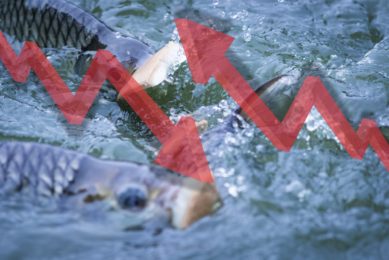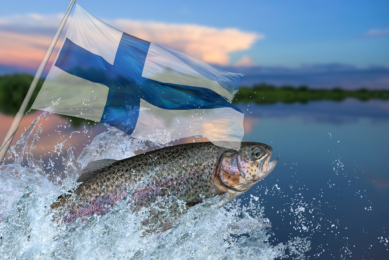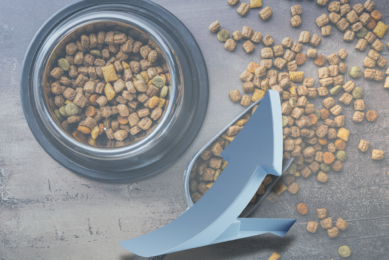The global aquaculture and fisheries outlook

According to a 2024 report by the Food and Agriculture Organization of the United Nations (FAO), global aquaculture and fisheries production reached its highest level in 2022, with aquaculture production of aquatic animals surpassing capture fisheries for the first time in history.
Aquaculture exceeds the output of capture fisheries
The 2024 edition of The State of World Fisheries and Aquaculture (SOFIA) states that global aquaculture and fisheries production in 2022 surged to 223.2 million tonnes, a 4.4% increase compared with 2020. In 2022, global aquaculture production reached an unprecedented 130.9 million tonnes, 94.4 million tonnes of which were aquatic animals. Global capture fisheries were at 92.3 million tonnes. Aquaculture growth indicates its capacity to further contribute to meeting the rising global demand for aquatic foods, but future expansion and intensification must prioritise sustainability and benefit regions and communities most in need. Of total aquatic animal production, 89% was used for direct human consumption, while the rest was destined for indirect or non-food uses, mainly fishmeal and fish oil production.
Commenting on the future focus for global aquaculture and fisheries production FAO Director-General QU Dongyu said: “FAO welcomes the significant achievements thus far, but further transformative and adaptive actions are needed to strengthen the efficiency, inclusiveness, resilience and sustainability of aquatic food systems and consolidate their role in addressing food insecurity, poverty alleviation and sustainable governance.
That’s why FAO advocates Blue Transformation, to meet the overall requirements of better production, better nutrition, a better environment and a better life, leaving no one behind.”
FAO projects rise in aqua production and consumption
Aquatic animal production is expected to increase by 10% by 2032 to reach 205 million tonnes. Aquaculture expansion and capture fisheries recovery are expected to account for this rise. The OECD-FAO Agricultural Outlook 2024–2033 projects global fish production to rise from 185 million tonnes (Mt) to 206 Mt by 2033, reflecting a 12% increase over the next decade. While aquaculture continues to expand globally, in the next decade it is expected that Europe and Africa will contribute only 3% each to global aquaculture production.
Consumption is projected to increase by 12% to supply on average 21.3 kg per capita in 2032. Rising incomes and urbanisation, improvements in post-harvest practices and distribution and dietary trends are expected to drive most of this increase. The OECD-FAO Agricultural Outlook 2024–2033 projects 60% of global fish demand to be met by aquaculture in 2033. The FAO estimates for 2022 show the following regional production figures:
- Aquatic animal production by region: Asia (70%), Europe (9%), Latin America and the Caribbean (9%), Africa (7%), Northern America (3%) and Oceania (1%)
- Main producers of aquatic animals by country: China (36%), India (8%), Indonesia (7%), Vietnam (5%) and Peru (3%)
Aqua trade forecast
The OECD-FAO Agricultural Outlook 2024–2033 highlights the fact that global trade in aquatic products is set to grow significantly over the next decade, driven by increased consumption, advances in storage and transportation, and liberalisation policies that facilitate international exchange. By 2033, it is projected that approximately 35% of aquaculture production will be traded internationally, with 31% excluding intra-EU trade. World exports for human consumption are expected to reach 45 million tonnes (Mt) by 2033, marking a 4.0% increase from the base period. This slower growth rate reflects the high levels of trade during the base period (2021-2023) and the recovery from the COVID-19 pandemic, which temporarily disrupted global trade flows. On the import side, the European Union is projected to remain one of the leading importers, while Africa is expected to see a substantial 38% increase in fish imports.
Figure 1 – World fishmeal production trends (FAO, 2024)

Fishmeal and fish oil projections
Fishmeal and fish oil are considered to be among the most nutritious and digestible ingredients for farmed fish, as well as the principal source of omega-3 long-chain polyunsaturated fatty acids in animal diets.
According to the FAO report “The State of World Fisheries and Aquaculture 2024”, by 2032, production of fishmeal and fish oil is projected to increase by 9% and 12%, respectively, compared with 2022, but the share of capture fisheries production reduced into fishmeal and fish oil should remain stable at around 19%. These increases in fishmeal and fish oil production will use whole fish resulting from the growth in capture fisheries production in 2032 compared with 2022, combined with by-products of the processing industry. Between 2022 and 2032, the proportion of total fishmeal obtained from fish by-products is projected to increase from 27% to 30%, while the proportion of total fish oil is projected to remain stable at about 57%. Peru and Chile will continue to be the top producers of fishmeal and fish oil, respectively.
The OECD-FAO Agricultural Outlook 2024–2033 projects that by 2033 83% of fishmeal and 70% of fish oil will be used in aquaculture feeds, highlighting the sector’s reliance on these resources. This shift towards aquaculture underscores the industry’s growing importance in meeting the nutritional needs of a growing global population.
Fishmeal exports are projected to increase slightly by 4.0%, reaching 3.6 Mt by 2033, with the European Union as a significant exporter in this market.
Fish oil exports are expected to see a substantial increase, rising by 12% to 1.1 Mt by 2033.
Norway and the European Union will lead in oil imports, with shares of 24% and 22%, respectively. These trends reflect the importance of fishmeal and fish oil in supporting the aquaculture sector’s growth, particularly as the demand for sustainable and efficient feed options continues to rise.
Future challenges and opportunities
The increasing frequency of extreme weather events, such as heatwaves, cyclones and floods impacts aquaculture, creating unpredictable and rapid changes that the industry must adapt to. The effectiveness of climate adaptation and mitigation strategies is difficult to predict, in particular how they will impact global fish production. Additionally, regulatory and economic changes, especially in major production countries such as China and Norway, introduce further unpredictability into future projections.
In response to these challenges, the FAO’s Blue Transformation initiative aims to improve the sustainable management of aquatic resources and address global hunger through more efficient, resilient and inclusive aquaculture.











